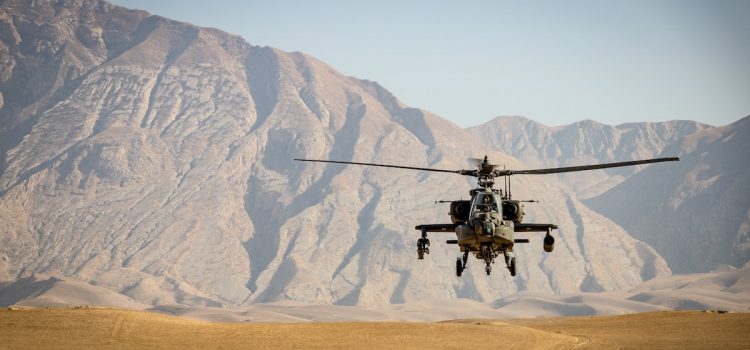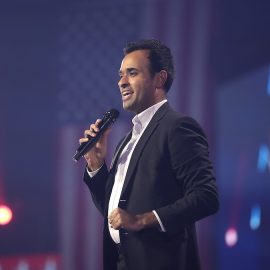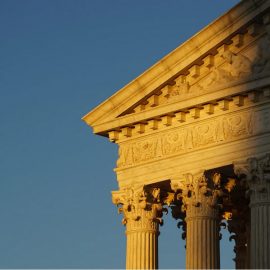

This article is an excerpt from the Shortform book guide to "The Silk Roads" by Peter Frankopan. Shortform has the world's best summaries and analyses of books you should be reading.
Like this article? Sign up for a free trial here.
Could the 9/11 attacks have been prevented? Why did the United States get involved in Afghanistan in the 1980s?
In The Silk Roads, historian Peter Frankopan argues that the political meddling by the U.S. and other Western powers in the Middle East and Asia during the 20th century would come back to haunt them in the 21st century. He cites Afghanistan in particular.
Read more to learn how U.S. intervention in Afghanistan backfired.
How U.S. Intervention in Afghanistan Backfired
In the 1980s, the U.S. supported militant Islamic jihadists (known as mujahidin) in Afghanistan in their fight against the Soviet invasion of that country. Frankopan explains that this U.S. intervention in Afghanistan would prove shortsighted when these former militants, having repelled the Soviets, became the Taliban and took over the country in 1996.
Under Taliban rule, Afghanistan would become a safe haven and training ground for militant jihadist organizations. These organizations—most notoriously, Al Qaeda—supported terrorist attacks against the U.S. and other Western powers, as part of what they saw as a holy war against the West for its support of Israel and its stationing of troops in Saudi Arabia, home of the holy cities of Mecca and Medina.
(Shortform note: In intelligence circles, “blowback” is the term for the unintended consequences of overseas covert operations like the U.S. support for the mujahidin Islamists in Afghanistan during the 1980s. There were figures at the time who warned about the risks of arming and financing Islamist militants—in the 1980s, Pakistan Prime Minister Benazir Bhutto told then-Vice President George H.W. Bush that the U.S. was “creating a Frankenstein” with the Afghan mujahidin—but these warnings went unheeded. By the end of the effort in Afghanistan (codenamed Operation Cyclone), the U.S. had funneled nearly $10 billion in direct aid and weapons sales to the mujahidin.)
The 9/11 Attacks and the War on Terror
On September 11, 2001, Al Qaeda operatives dealt a devastating blow to the United States when they hijacked commercial airliners and crashed them into the twin towers of the World Trade Center in New York City and the Pentagon outside Washington, D.C. (a fourth airliner crashed into a field in rural Pennsylvania before it could reach its intended target). Frankopan writes that history had truly come full circle, as Al Qaeda invoked the legacy of the Crusades and Western/Christian meddling in Asia as a justification for its violent anti-Western ideology and tactics.
The attacks killed nearly 3,000 people and ushered in a new era of aggressive American militarism, as the U.S. sought revenge and began a project to entrench U.S. military and political dominance in Asia and the Middle East once more. As part of its declared “War on Terror,” the U.S. launched costly and protracted military engagements in Afghanistan and Iraq in an attempt to force regime change in these countries and install more pliant, pro-Western governments. Frankopan argues that these wars produced little value for the U.S. and its allies, with hundreds of thousands of military and civilian deaths and trillions of dollars wasted.
| Barack Obama’s Attempts to Redefine the War on Terror In his memoir, A Promised Land, former president Barack Obama writes that the dominant foreign policy issue at the start of his administration was the fight against international terrorism. While there was broad agreement in the administration that the U.S. needed to dismantle and destroy Al Qaeda’s overseas networks, there was also agreement that the George W. Bush administration’s approach had been ill-conceived, ineffective, and contrary to American values. Obama writes that he wanted to prosecute the War on Terror in line with America’s democratic and Constitutional values, rejecting Bush-era policies of unilateral war, torture, and disregard for the Constitution. He believed this would not only be more just but also more effective in the long run, by restoring American moral authority and making it easier to secure the much-needed cooperation of partners in the Muslim world. This was why his administration focused on winding down the Bush-era torture program, from its efforts to close the extrajudicial detention facility Guantanamo Bay (which was ultimately unsuccessful); codify counterterrorism practices under a legal framework in line with the Constitution; and initiate diplomatic, political, and cultural outreach to the broader Muslim world. |

———End of Preview———
Like what you just read? Read the rest of the world's best book summary and analysis of Peter Frankopan's "The Silk Roads" at Shortform.
Here's what you'll find in our full The Silk Roads summary:
- Why the Silk Roads have always been history’s crucial connection point
- Why understanding the East is crucial to our understanding of the world
- A history of the Silk Roads, from ancient times to the 21st century






